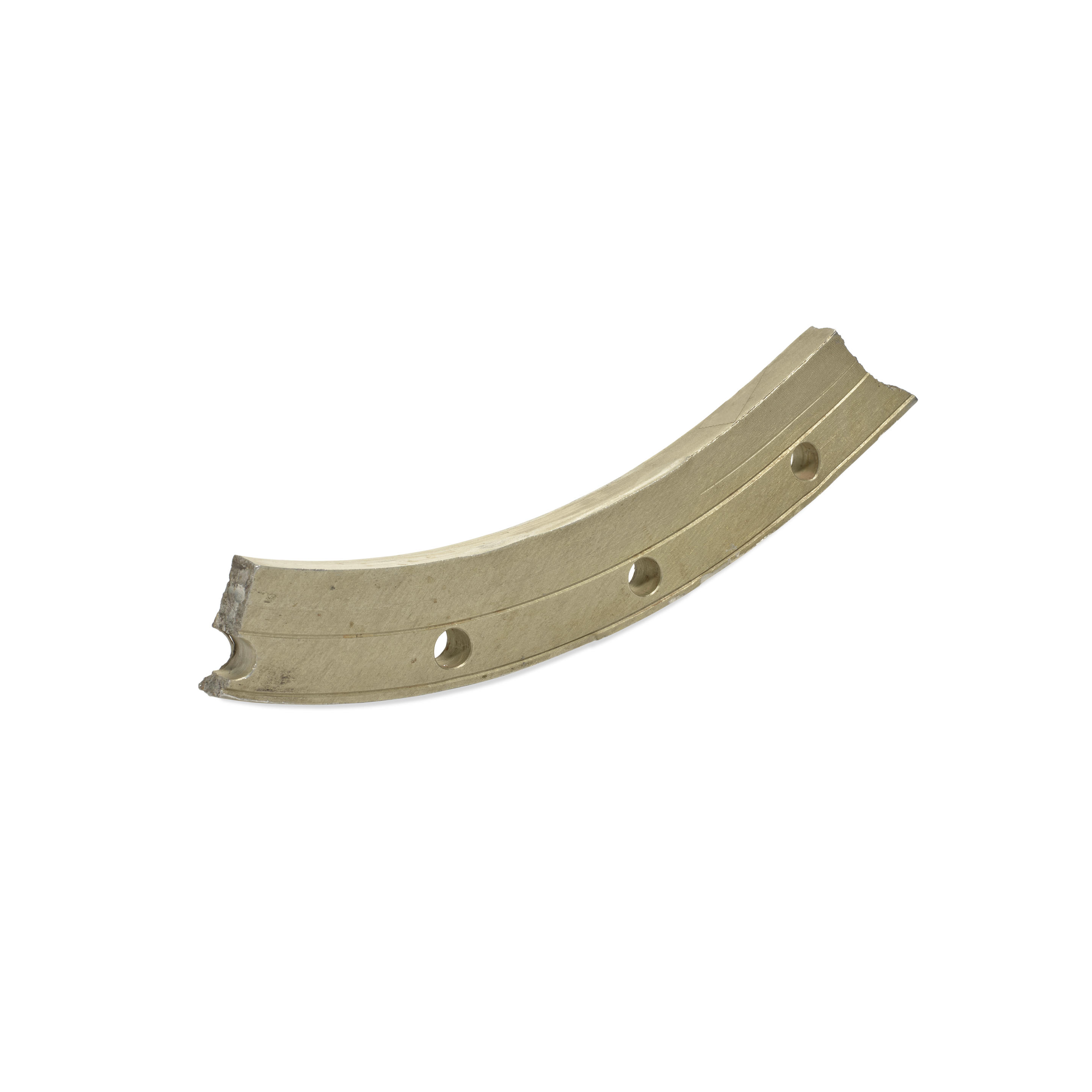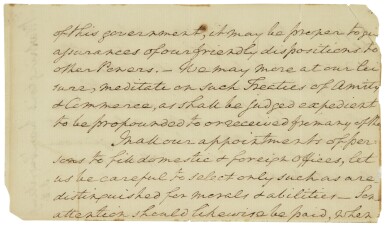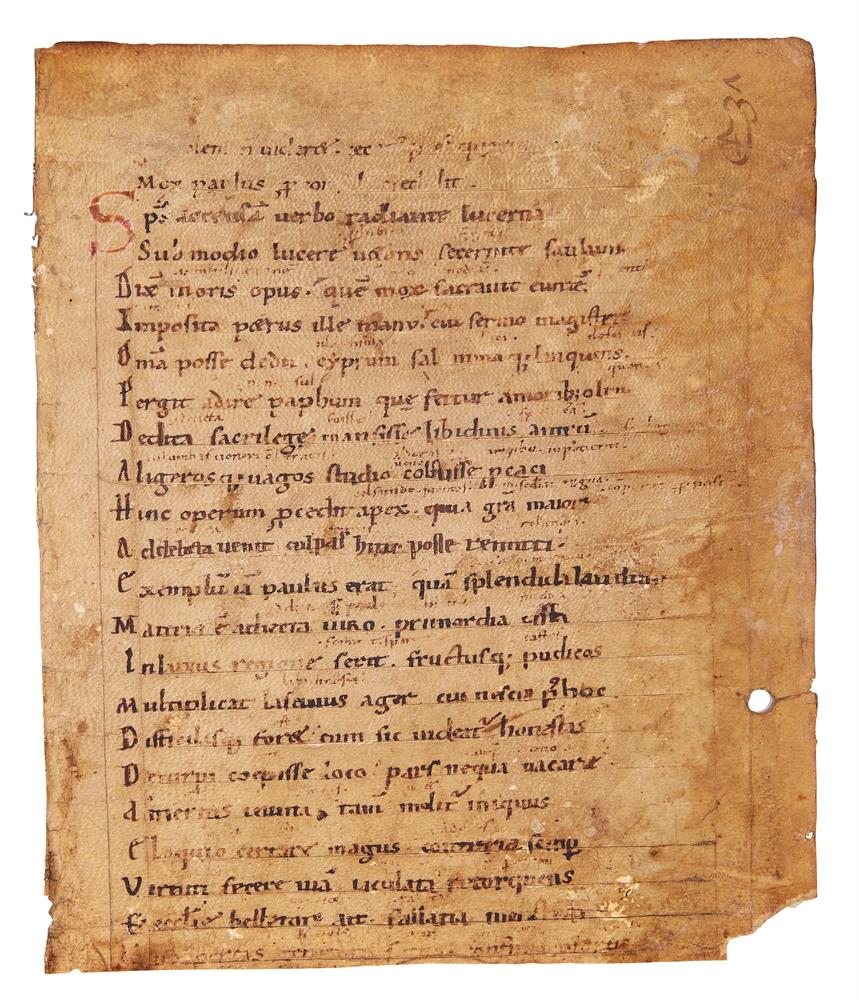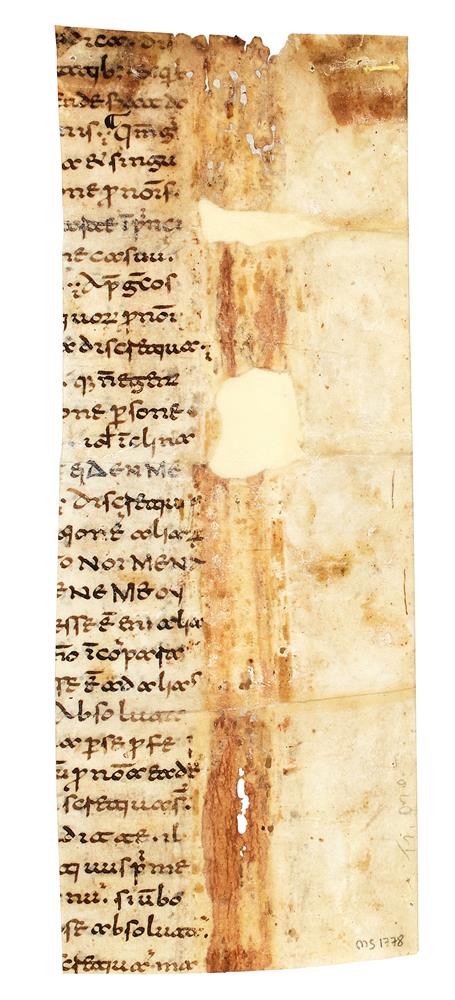AN EARLY FRAGMENT FROM THE PHYSIOLOGUS, in Latin, manuscript on vellum [Germany, 10th century] A rare survival from a 10th-century Physiologus , describing the sex life of the elephant 22 x 109mm. The visible text is from the B version of the Physiologus, XXXIII: ‘[concu]piscentiam uero cogitur in se mini / [me fetus habet]. Tempore suo cum uoluerit filios / [procrea]re uadit in orientem cum femina […]’ (strip recovered from a binding, text on reverse rubbed and difficult to decipher ‘[...]atum / [...]is qui [...] seq[...]’). A precursor to the medieval bestiary, the Physiologus is an early Christian collection of naturalistic and allegorical descriptions of animals and mythical beasts. No early Greek copies survive and the earliest surviving Latin translations are the B version (Bern, Lat. 233, 8-9th century – the foundation of most subsequent medieval bestiaries); the Y version (Bern, Lat. 611, 8-9th century); the C version (Bern, Burgerbibliothek, lat. 318, 9th century); and the A version (Brussels, Bib. Roy. 10074, 10th-11th century): the text in the present fragment follows the B version. The script can be dated to the 10th century: the ‘s’ is in the long form, the ‘t’ is short with a wide crossbar, the ‘l’ has a clubbed and notched ascender, and the ‘g’ has the form of two closed loops.
AN EARLY FRAGMENT FROM THE PHYSIOLOGUS, in Latin, manuscript on vellum [Germany, 10th century] A rare survival from a 10th-century Physiologus , describing the sex life of the elephant 22 x 109mm. The visible text is from the B version of the Physiologus, XXXIII: ‘[concu]piscentiam uero cogitur in se mini / [me fetus habet]. Tempore suo cum uoluerit filios / [procrea]re uadit in orientem cum femina […]’ (strip recovered from a binding, text on reverse rubbed and difficult to decipher ‘[...]atum / [...]is qui [...] seq[...]’). A precursor to the medieval bestiary, the Physiologus is an early Christian collection of naturalistic and allegorical descriptions of animals and mythical beasts. No early Greek copies survive and the earliest surviving Latin translations are the B version (Bern, Lat. 233, 8-9th century – the foundation of most subsequent medieval bestiaries); the Y version (Bern, Lat. 611, 8-9th century); the C version (Bern, Burgerbibliothek, lat. 318, 9th century); and the A version (Brussels, Bib. Roy. 10074, 10th-11th century): the text in the present fragment follows the B version. The script can be dated to the 10th century: the ‘s’ is in the long form, the ‘t’ is short with a wide crossbar, the ‘l’ has a clubbed and notched ascender, and the ‘g’ has the form of two closed loops.


.jpg)

.jpg)
.jpg)









Try LotSearch and its premium features for 7 days - without any costs!
Be notified automatically about new items in upcoming auctions.
Create an alert